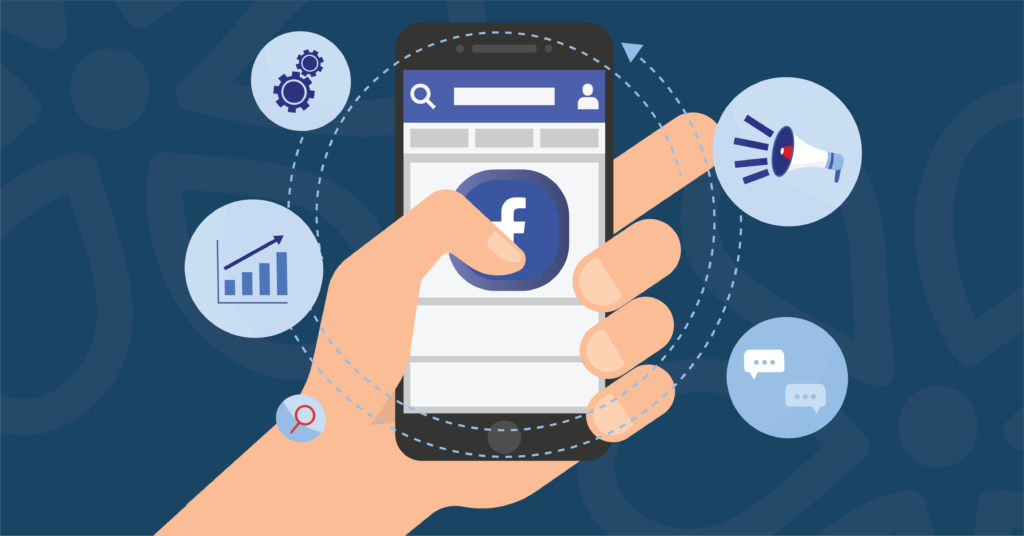Memes can boost your digital marketing by engaging audiences. First Media can guide your brand in adapting or creating memes for platforms like TikTok.
Digital memes, those shape-shifting gems of the digital landscape, have evolved significantly over the years. Beginning with humble image macros and progressing to the animated hilarity of GIFs, they’ve continuously adapted to the changing dynamics of online culture.
Today, these funny and often low-effort gems can be found everywhere. New memes can spread through Facebook, TikTok, Reddit, Instagram, Imgur, and Twitter in days, sometimes even hours. The appeal of memes is their relatability. From Awkward Moment Seal to Sad Affleck, memes reflect the human experience and can help create a sense of connectedness.
For brands, leveraging the power of digital marketing memes can help round out a social media strategy. Sharing memes can be a fun way to engage with customers. Memes might be a helpful tool if you are looking for ways to improve relatability and authenticity. Let us share some marketing tips for how your brand can successfully include memes in your social media presence.
What is a Meme?
The term “meme” was coined by evolutionary biologist Richard Dawkins in his 1976 book, “The Selfish Gene.” He defined a meme as a unit of cultural transmission, similar to a gene in biology. Dawkins proposed that memes, like genes, could be replicated, mutated, and transmitted from person to person, thereby shaping culture and behavior.
While the concept of memes predates the internet, the digital age truly catapulted them into the limelight. The decentralized nature of the internet and its ability to connect people globally created the perfect breeding ground for memes to thrive.
Memes and Marketing
As memes have matured they have begun to form a potent partnership with digital marketing. These viral snippets of humor and cultural references hold immense power to engage audiences, build brand awareness, and foster a sense of connection. By harnessing memes’ inherent relatability and virality, brands can effectively connect with Millennials and Gen Z audiences. Here are some helpful meme marketing tips.
Strategies for Effective Meme Marketing
- Know your Audience: How a streaming platform like Netflix implements meme marketing differs from a pet brand like Barkbox because of its unique audiences. Thoroughly research and understand your target audience to create memes that resonate with their interests, humor, and values.
- Engage with Memes, Don’t Exploit Them: Engage in meme culture rather than trying to exploit it for commercial gain. Show genuine appreciation for internet humor.
- Stay Relevant: Keep up with current internet and pop culture trends. While there is nothing wrong with using an older meme, knowing what is relevant and what is not can be the difference between authentic connection and failure.
- Maintain Brand Consistency: Ensure all your content marketing, not just memes, aligns with your brand’s values, tone, and messaging. Memes should reinforce your brand identity, not take away from it.
- Be Authentic: Avoid using memes in a way that feels forced or inauthentic. Memes should fit naturally into your content.
- Humor and Entertainment: Use funny memes to capture your audience’s attention and entertain them, but be mindful of offensive or controversial content.
- Create Shareable Content: Make your meme content easily shareable to encourage organic reach across multiple social media platforms.
- Use Memes Sparingly: Avoid overusing memes in your marketing. Use them strategically to complement your overall content strategy.
- Cross-Platform Adaptation: Tailor your meme marketing strategy to suit different social media platforms, as what works on one may not work on another.
- User-Generated Content (UGC): Encourage user-generated meme content related to your brand or products. User-generated memes can be a powerful way to build brand loyalty, communicate authenticity, and grow engagement.
- Monitor Engagement: Monitor how your audience responds to meme content. Adjust your strategy based on the feedback and preferences of your audience. Measure the success of your CTAs to determine what works and use it moving forward.
- Legal Considerations: Ensure you have the right to use images, videos, and other content in your memes. If in doubt, create original content.
- Memejacking with Caution: Memejacking is when brands use popular memes for their own marketing. If you do this, make sure it’s done in a clever and relevant way. The difference between appearing engaged and appearing desperate is difficult to define.
- Stay Positive: Focus on creating memes with a positive or lighthearted tone to maintain a friendly and approachable brand image.
- Experiment and Iterate: Be willing to experiment with different meme styles and themes and learn from the results to refine your approach over time.
Some Marketing Meme Challenges
Meme marketing, as exciting and engaging as it can be, comes with challenges. In this section, we’ll look at some of these challenges and explore strategies for navigating them.
Misuse of Memes
One of the primary pitfalls of using memes as a marketing tool is the risk of misuse. Misuse of memes can make your brand appear out of touch or insensitive. We’ve seen a thousand examples of meme misuse by brands who tried their very best to stay on trend but ended up pushing their audience away.
Take the time to understand the context of a meme, its origins, and its current connotations. They change as quickly as they appear; if you’re one step behind, your audience will know. Working with a content creation agency can help you stay on trend.
Measuring Success
Effectively measuring the impact of meme marketing can be complex. Sometimes, a meme will spread like wildfire, but not with the right audience. Sometimes a meme will have limited reach but have a big impact within a niche audience. It is impossible to craft a surefire hit, but there are some tools you can use to gauge the effectiveness of your meme marketing efforts.
- Engagement Metrics: Keep track of views, likes, shares, comments, and reach to gauge how well your post fits the target audience.
- Conversion Rates: Track how meme-engaged users convert. Viewers are great, but the goal of marketing is to drive action. Defining a successful conversion and tracking those conversions shows the real impact of your campaign.
- Brand Sentiment: Monitor comments, user-generated content, and online discussions to gauge brand perception. Again, more views are great, but you should know whether it is due to positive sentiment.
- Website Traffic: Analyze traffic sources to your website to see if memes effectively reach potential customers. User engagement that doesn’t turn into consideration or a purchase decision is really just noise.
- Social Shares: High shares reflect meme virality and audience engagement.
- User-Generated Content: New customers tend to trust their peers for recommendations. Tracking the growth and sentiment of UGC can help you understand if your efforts are building or eroding trust and connection with your audience.
- Competitive Benchmarking: Compare meme success with relevant industry standards.
- ROI: Calculate meme campaign profitability by comparing costs to revenue.
- Long-term Impact: Assess how meme marketing influences brand loyalty and recognition over time.
To successfully leverage meme marketing, you must be agile, data-driven, and receptive to audience feedback. With the right approach, meme marketing can elevate your brand’s digital presence and create a unique and relatable connection with your audience.
Memes Across Different Social Media Platforms
Meme marketing isn’t one-size-fits-all across all social media platforms. The topics, formats, and viral trends that resonate with audiences vary across platforms. Understanding audience preferences and platform algorithms can help you tailor your content for each audience.
TikTok’s Swift Trends and the Power of Hashtags
Use video on TikTok. Still images, and even gifs, don’t perform well. Also, be ready for iteration! Trends emerge and evolve quickly on TikTok. Short, new, relatable videos are ideal. Incorporating trending hashtags is important for enhancing your content’s visibility.
LinkedIn’s Professional Meme Landscape
Static images or simple gifs are a good fit for LinkedIn. As a platform tailored for professionals, memes here often revolve around industry-specific humor, office life, and professional challenges. A successful LinkedIn meme should combine humor with relevant insights, offering a unique take on the corporate world while keeping an eye on trends.
Visual Appeal on Instagram and Facebook
Instagram and Facebook are visual-centric platforms. The trick to creating organic ads for these platforms is to include eye-catching images and video memes. They’re hubs for humor, lifestyle, and relatable content. Here, you’ll find viral meme trends tied to aesthetics and lifestyle. Adapt your meme content to align with these platforms’ visual preferences and closely watch the trends that captivate users.
X’s Quick-Witted Memes
X, aka Twitter, is the platform for concise communication. Successful posts demand quick-witted and timely memes. Memes that engage in trending X conversations often receive the most attention. Staying on-trend requires sharp humor, pop culture references, and a finger on the pulse of current events.
Creating Your Own Memes vs. Using Existing Ones
In meme marketing, one of the most significant choices you’ll face is creating original memes or leveraging existing ones. Both options have benefits and challenges; understanding them is key to shaping your brand’s digital marketing strategy.
Original Meme Creation
Crafting brand-specific memes allows you to embed your brand’s identity into internet culture. It allows you to create memes that directly connect with your target audience and convey your brand’s message. However, this option is not without its difficulties, and missteps can be costly, potentially resulting in memes that fall flat or, worse, harm your brand’s reputation.
Optimizing Existing Memes for Your Brand
Optimizing existing memes provides a swift avenue to tap into current internet trends and interact with your audience in a language they already know. This approach can be highly effective when executed thoughtfully and harmoniously with your brand’s voice. It involves working with meme generators and templates and infusing your own humor into them with background images and text overlay.
A successful meme strategy often starts with the use of existing memes. Once your team has a better understanding of meme culture, branching out to create original content is more likely to land with your established audience.
Captivating the Digital Audience: The Future of Meme Marketing
As the digital world evolves, so does meme marketing. By staying agile, data-driven, and receptive to audience feedback, brands can enhance their digital presence, fostering a unique and relatable connection with their audience. As you explore meme marketing, First Media is here to help you understand your audience, provide meaningful insights, and help you create content that converts.





